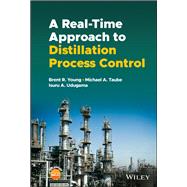A practical and hands-on discussion of modern distillation control
In A Real-time Approach to Distillation Process Control, a team of distinguished researchers and industrial practitioners delivers a practical text combining hands-on and active learning using process simulation with discussions of the fundamental knowledge and tools required to apply modern distillation control principles. The book offers a balanced, real-time approach integrated with practical insights. It includes many exercises designed to be simulator agnostic that can be performed on the process simulator locally available to the reader.
Readers will discover explorations of topics including distillation control hardware, distillation composition control, refinery versus chemical plant distillation control, distillation control tuning, advanced regulatory control, and more. They’ll also find:
- A thorough introduction to distillation fundamentals, as well as basic and advanced modern controls from a practical point of view
- Comprehensive explorations of known base controls combined with modern control practices
- Practical discussions of hands-on modelling and simulation exercises, allowing the reader to design and tune controls on a distillation column
- Fulsome treatments of control structure design integrated with controller tuning using a real-time approach
Perfect for senior undergraduate and graduate students studying general process control or distillation process control, A Real-time Approach to Distillation Process Control will also benefit plant managers, production supervisors, startup supervisors, operations engineers, production engineers, and chemical engineers working in industry.








